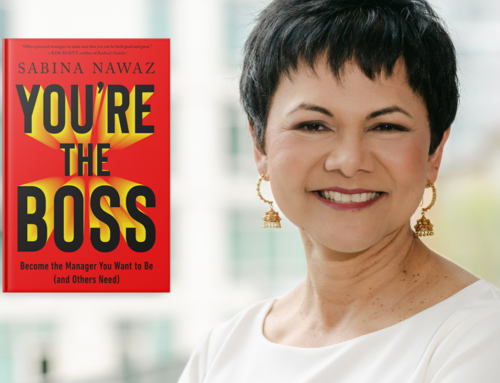Let’s dispense with the obvious first: this deeply dispiriting exchange was neither a debate nor a conversation nor even a policy discussion. It was a shouting match, and the American people lost out. This event was the least edifying, most unpleasant political evening I’ve ever spent.
Yes, President Trump interrupted and talked over Vice-President Biden more than the reverse. And yes, Biden called Trump a “clown,” and told him to “shut up.” Yes, Trump went after Biden’s son several times, presumably trying to goad the Vice-President into losing his temper. Yes, Biden managed to keep his temper. And yes, Chris Wallace lost control of the evening and was unable to do his job of moderation effectively.
Can the study of body language tell us anything useful beyond the obvious about the evening? Surprisingly, perhaps, a couple of things. Here are my takeaways, besides noting that the first presidential debate was neither presidential nor a debate.
1. Both candidates were aging alpha males on hyper-alert status. Both Trump and Biden were standing at full height, and regularly during the evening, as they began to tire, and sag slightly, they pulled themselves back up to full height again. They were both holding themselves rigidly, prepared for a fight. The effect was as if we had two old silverbacks competing for the domination of the troop.
2. Trump’s body language was markedly different from his debate with Hillary Clinton. During his debate with Clinton, as was widely noted at the time, Trump stalked Clinton around the stage and engaged in some very expansive gesturing with both arms and with one hand, at various times. Here, he stayed behind the podium and was much more limited in his gesturing.
3. Trump’s limited gesturing was often with just one hand; normal conversational gesturing usually involves both hands. We typically gesture with one hand when we are angry, dismissive, or passionate.
4. Biden’s gesturing, especially when he turned to the camera, was more balanced. Biden reached toward the camera (and the American people) with both hands. Thus his attempt to connect with the television audience felt more reasonable and emotionally controlled. Mostly, Trump did not attempt to connect directly with the television audience in this way per se.
5. During the Clinton-Trump debate, Trump displayed constant anger; for his debate with Biden, his expression was typically one of contempt or dismissal. Trump’s facial expression was more restrained than in the previous debate. For his part, Biden smiled far more often and looked down or away more often. Typically, this meant he was taking himself out of the fray and waiting for Trump to finish.
6. Both candidates’ pitch was elevated, showing stress and the result of a “fight or flight (or freeze)” response. Adrenaline can cause our voices to rise in both pitch and volume and both men displayed this sort of tension.
So there you have it. Body language doesn’t always reveal what we expect; in this case it did reveal that – whatever else was going on – Trump took Biden much more seriously than he did Clinton four years ago.








And “So there you have it.” Thank you Nick. Enough said.
Thanks, Elizabeth!
Great analysis as always, Nick. Thank you! I was waiting to see your analysis of the non-verbal communications. I noted that Biden also looked at the camera often with wide eyes. To me that says he’s trying to convince us of something, maybe even something he’s not 100% confident of. I suppose it was his passion and his concern about making his point, but to me it took away from the points he was making. Did I imagine that or did you see something similar?
Also, while we can all agree that Trump was way off the rails, I was just hoping Biden would not ‘take the bait’ and respond. I was disappointed that Biden several times let Trump interrupt him, and even responded to the interruption. To me, Biden ‘gave into’ Trump’s antics with these responses. I would have preferred to have Biden say to the camera/Chris Wallace something like “I can see that Donald is interrupting and shouting again. I’m just not going to respond to that at all.” or “While Donald is ranting over there, I’m just going to ignore him and share with you (the American people) my thoughts on the question we are discussing”. Even if no one could hear Biden’s response over Trump’s antics, he should have continued to talk into his microphone and give us his answer, ignoring the endless rants hurled at him. To me, when Biden stops talking, turns his face to Trump, and in some cases stops saying what he’s saying and responds to Trump’s interruption, he gave away power. If he had kept looking at the camera/addressing his comments to us rather than Trump, he would have looked more Presidential to me.
Anyone else notice or feel this way?
Thanks, Keri, for your comments. Open eyes can also indicate interest or attention — at the simplest level, it means we like what we see. So we would need to be able to observe the Vice President in several contexts to understand better what this open-eyed gesture means in his repertoire. For your other point, it’s very difficult not to respond to someone when is arguing with you, but you’re right. Biden would have been better served by doing as you describe — just addressing the TV audience, aka the American people.
Nick,
You focused on body language which I agree.
I looked at what are some other things Trump dis wrong and how he can turn it around.
https://www.winningspeechmoments.com/blogs/can-trump-turn-it-around-in-the-next-two-debates
The question is is he disciplined enough to do it? I don’t think so since success is often a bad teacher.
Thanks, Jay! I tend to agree with your POV — I don’t think Trump can change enough and in time to do better in the next two debates, if they in fact are held.